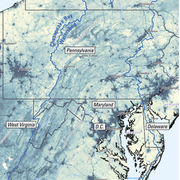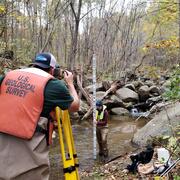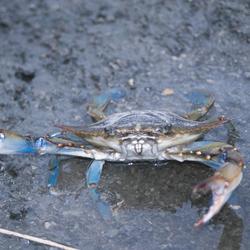Streams and Environmental Change
Climate change and variability, along with adjacent land use, can affect stream conditions and health. The USGS is providing science on changes in stream flows and temperatures on habitats important for fisheries. The findings will help address the Chesapeake Bay Program (CBP) Goals for fisheries, habitat, and water quality.













